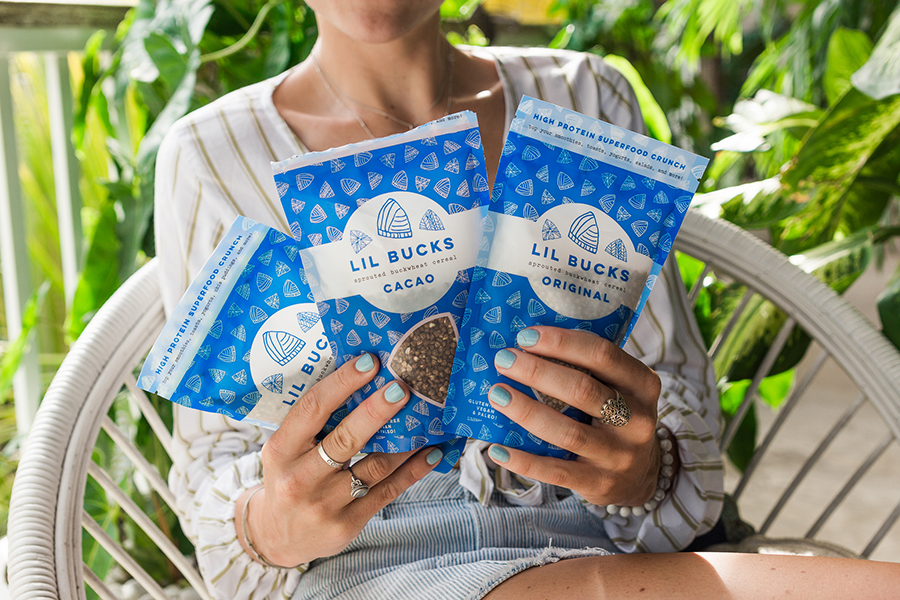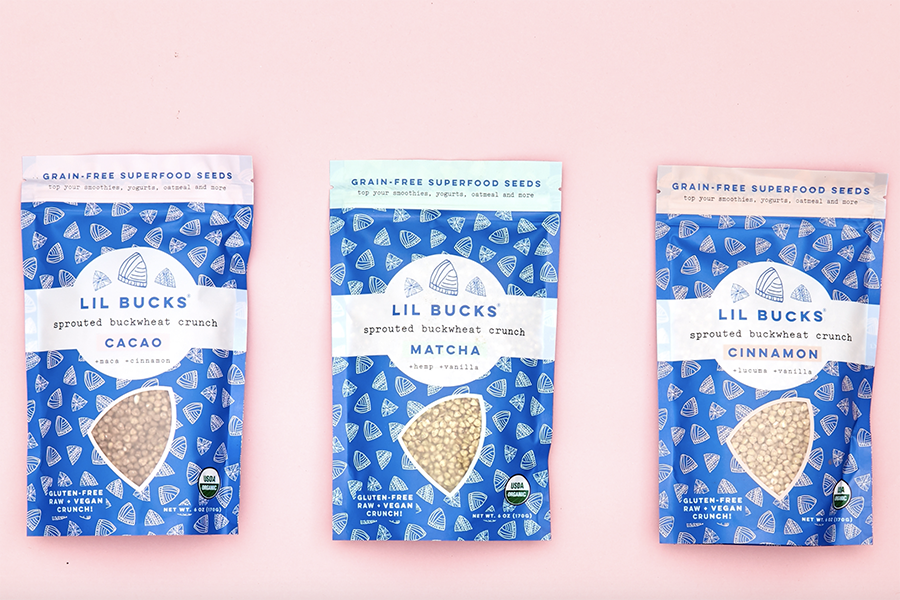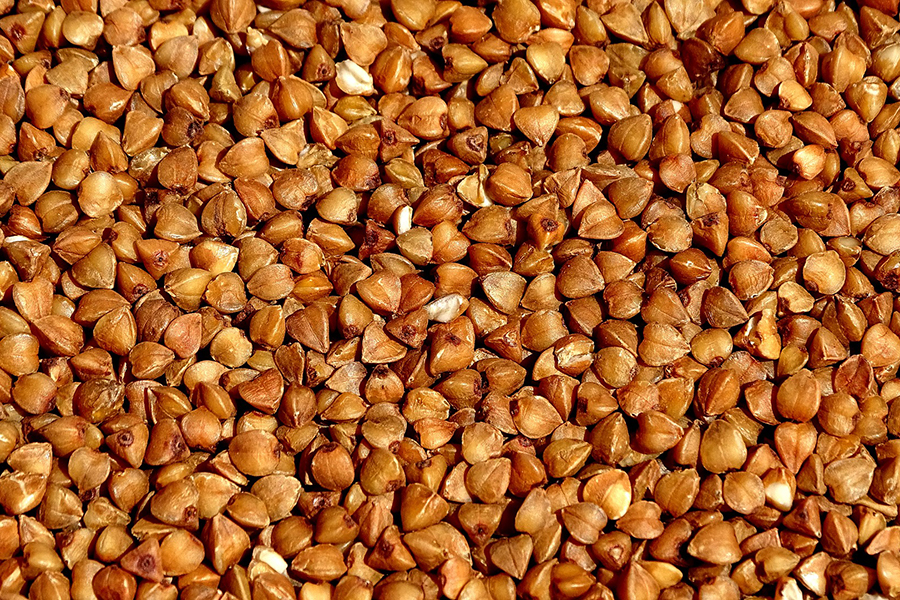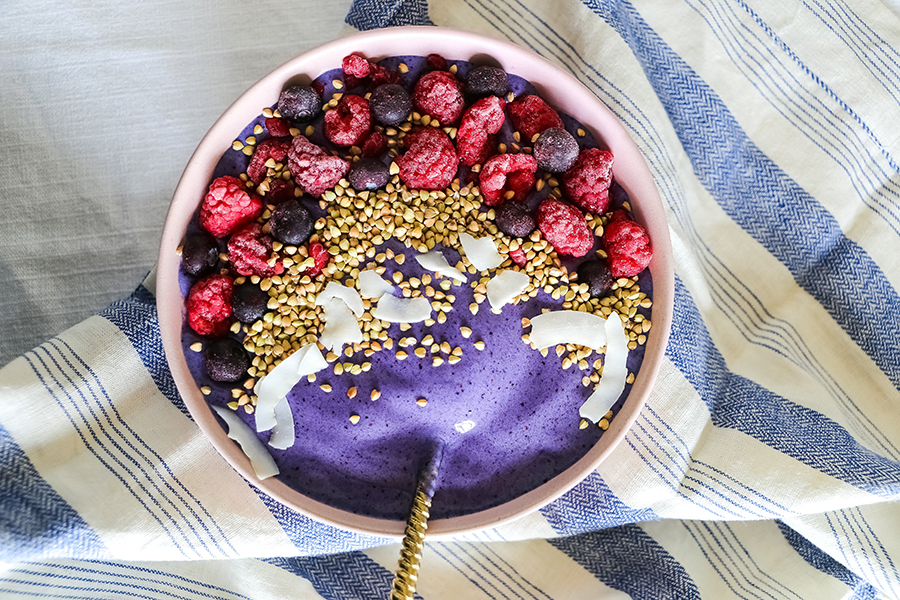Home > Farm > Crops & Livestock > How Lil Bucks Is Creating a New Buckwheat Market and Opportunities for Farmers
How Lil Bucks Is Creating a New Buckwheat Market and Opportunities for Farmers

If your only experience with buckwheat thus far has been a big stack of buckwheat pancakes doused in syrup and butter, don’t worry. Until recently, this crop hasn’t been widely marketed to American consumers, other than as ground up flour — but that’s slowly changing. Mainly grown in the Northern Plains region of the United States, buckwheat is now produced on more than 70,000 acres. Now, one savvy food entrepreneur is turning buckwheat into a crunchy superfood, not only providing a healthy snack but also giving farmers more reason to grow the crop.
Chicago native Emily Griffith first discovered activated buckwheat seeds in Australia several years ago, impressed by the taste and texture they lent to acai bowls. When she returned to the U.S., she made it her mission to bring sprouted buckwheat seeds to the masses — and at the same time help promote sustainable farming practices. Lil Bucks, the first dedicated sprouted buckwheat brand in the U.S., was born.

Starting From Scratch
Griffith knew she wanted to recreate the healthy snack she enjoyed Down Under but didn’t have any personal connection to growers. “I didn’t know how the sourcing worked,” she recalls. “I didn’t even know anyone who farmed.” So, she carved her own path, searching agriculture websites for Midwestern states and looking for organic buckwheat farmers — and hunting down their phone numbers to reach out.
See more: Guide to Alternative Flours
“People told me they’d love to grow buckwheat, but it was hard to find a market for it,” says Griffith. Her first buckwheat supplier was in China, but she knew that sourcing from around the world didn’t align with her mission. “You can get high-quality buckwheat in America and get better soil health and a lower carbon footprint, so I really pushed on finding a U.S. supplier,” she says.

How Buckwheat Is Grown
Despite not being widely grown, buckwheat is actually a great rotating crop. It grows well in cold climates and in poor soil, and unusually quickly — flowering within 90 days. It’s typically planted in Midwestern states in June and harvested in late August, then ground into flour at a mill. “Since we’re mostly used to eating buckwheat as flour, a lot of the mills take off the shell and pulverize it,” says Griffin. “That’s great for flour — but I needed the seed, because the point [of Lil Bucks] was the crunch.”
She finally found a mill in Minnesota that was able to source and manufacture buckwheat seeds the way she needed. But Griffin was still looking to do more in her mission of using the most sustainable ingredient possible. “We knew which farms were selling to [the mill], but we couldn’t certify that this was Farm A or Farm B’s buckwheat — it was all combined,” she says.

But by the end of 2021, that’s changing. Lil Bucks has partnered with A-Frame Farm based in Minnesota, which is among the first farms to be regenerative organic certified (ROC). Farms and products earning this certification, which is overseen by the nonprofit Regenerative Organic Alliance, meet the highest standards in the world for soil health, animal welfare and farmworker fairness.
“It was a really cool moment to me, to test our commitment to this mission,” says Griffin. Although the price for regenerative organic certified buckwheat is doubled compared to regular buckwheat, she is making it work without raising the price of Lil Bucks — “because no one has done it before,” she says.

Seeing the Bigger Picture
Luke Peterson oversees the 500-acre A-Frame Farm, which has a diverse crop rotation of corn, soybeans, wheat, einkorn, oats, barley, peas, flax, alfalfa and a few others, in addition to about 40 to 70 acres of buckwheat. Peterson says he was first drawn to the ROC label because of how industrialized the organic industry has become. “I feel like ROC is what the USDA Organic label was meant to be before it was highjacked by corporate food companies,” he explains. “It’s the details that really matter, and this certification looks at those details.”
Among those details: rotations, cover crops, integrating livestock, minimal disturbance and rest periods for the land. Peterson says growing buckwheat has added diversity to his land, which has brought beneficial insects to the farm, as well as alternative planting dates (thanks to its quick growing period), which helps to break the weed cycle. “If I’m given the opportunity to grow a new crop, I take it, because the more diverse an ecosystem is, the better chance it has at surviving,” Peterson says. “All crops have their benefits, but it’s crops like buckwheat that help complete the system.”

When someone buys a bag of Lil Bucks, they’re getting protein-packed, sprouted superfood seeds that are raw, vegan and paleo. They’re delicious on everything from smoothie bowls to oatmeal to salads. But in the bigger picture, they’re also supporting a new development in American agriculture. “Companies like Lil Bucks are the lever I need to move my farm forward in this regenerative movement,” says Peterson. “To remain competitive against the current model of agriculture, I need a market. There is a lot of talk about diversity on farms and the benefits to soil and water quality, but it isn’t very often food companies are taking the steps to create diversity in the market.”



